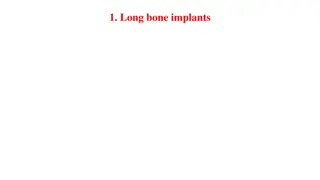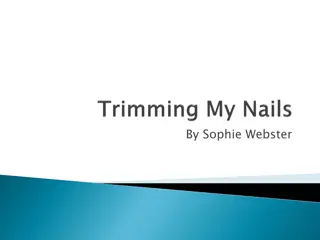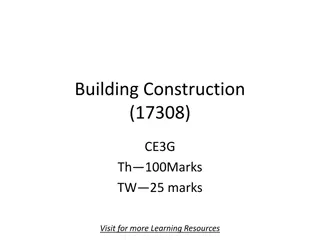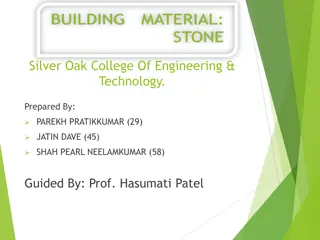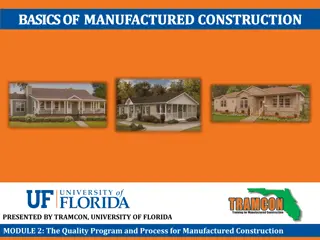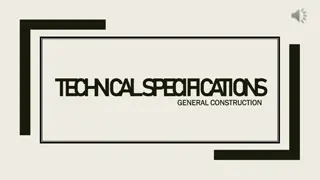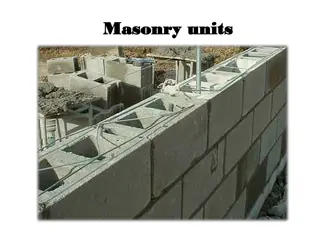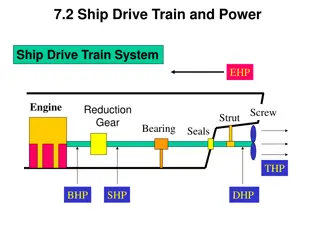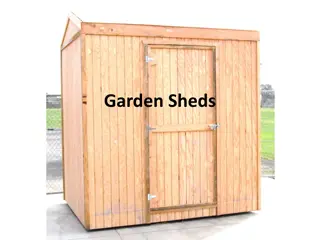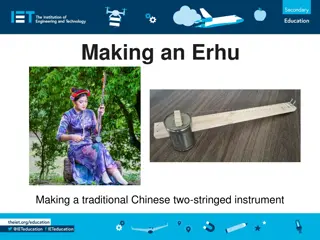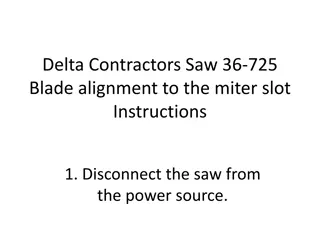Uses of Screws and Nails in Construction
Explore the uses of screws and nails in construction work, including types of screws like countersunk, round, raised head, and drywall screws. Learn the advantages of using screws over nails and discover the different types of nails, such as round wire, masonry, cloud nail, and more. Understand the purposes of each type of fastener and how they offer unique benefits in various construction applications.
Uploaded on Sep 26, 2024 | 0 Views
Download Presentation

Please find below an Image/Link to download the presentation.
The content on the website is provided AS IS for your information and personal use only. It may not be sold, licensed, or shared on other websites without obtaining consent from the author. Download presentation by click this link. If you encounter any issues during the download, it is possible that the publisher has removed the file from their server.
E N D
Presentation Transcript
Civil Technology Construction GRADE 10 TOPIC: JOINING (GENERIC) TERM 3 WORK
TOPIC: JOINING (GENERIC) CONTENT: IDENTIFY AND EXPLAIN THE USES OF: 1. SCREWS: Countersunk head, Round head, Raised head, Drywall screw, 1.1 ADVANTAGES OF USING SCREWS OVER NAILS.
TOPIC: JOINING (GENERIC) CONTENT: IDENTIFY AND EXPLAIN THE USES OF NAILS: 2. NAILS: Round wire Masonry Cloud nail Steel cut nail Oval nail Panel pin Clout nail 2.2 ADVANTAGES OF USING NAILS OVER SCREWS
1. Screws: Parts of a screw:
1.1 Countersunk head Uses: stand out above the surrounding surface or be visible. To fix hinges, fittings, etc. to wood where the screw holes are countersunk To hold two pieces of stock together, where the head must not
1.2 Round head Uses: does not matter. To fix hinges, fittings, etc. to wood where the screw holes are no countersunk. To hold two pieces of stock together, where the visible head
1.3 Raised head Uses: stand out above the stock as much as the roundhead screw does. To fix hinges, fittings, etc. to wood where the screw holes are countersunk. To hold two pieces of stock together, where the head does not
1.5 Drywall screw Uses: corrosion. The sharp point makes it easier to stab the screw into the drywall paper and get the screw started. The bugle head shape helps the screw stay in place, without tearing all the way through the outer paper layer. Black drywall screws have a phosphate coating to resist
1.1 Advantages of using screws over nails: Screws have a higher holding ability than nails. Screws can be removed easier and with less damage than nails. They can be replaced with less damage than nails. The shock of driving the nail may damage the work, which is not the case with screws. They have a higher holding ability over a longer than nails. period of time
TOPIC: JOINING (GENERIC) CONTENT: IDENTIFY AND EXPLAIN THE USES OF NAILS: 2. NAILS: Round wire Masonry Cloud nail Steel cut nail Oval nail Panel pin Clout nail 2.2 ADVANTAGES OF USING NAILS OVER SCREWS
2. Nails: Parts of a nail:
1.1 Round wire: Uses: General use where the visible head does not matter. Carpentry e.g. roof trusses.
1.2 Masonry: Uses: a brick or concrete wall, and they can be used to fasten down a heavy appliance that you want firmly anchored on a concrete floor. These often have fluted or spirally threaded shanks and are much harder than regular steel nails. They will not bend, but they will break if not hit square on the head and driven straight in. Masonry nails can be used to secure shelf brackets or hanging supports to
1.3 Clout nail: Uses: wood, for example when metal is used for siding or roofing. Can be used for a wide variety of exterior and interior woodworking and building purposes, like furniture repair, cabinet making, fastening roof shingles, as well as box and crate construction. One common use for these nails is to fasten sheet metal to
1.4 Steel cut nail: Uses: boards. Steel cut nails are used in concrete or brickwork. Mild steel cut nails are used on softwoods, such as floor
1.5 Oval nail: Uses: The broad side is placed with the grain to avoid splitting the wood. Meant for wood that split easily. For mouldings.
1.6 Panel nail: Uses: Where a large head would be unsuitable. In wood that easily cracks.
1.7 Brad nails: Uses: on doors, casings, or mouldings. Can be driven into the surface of wood materials through the use of air compressor-powered nail guns. Brad nails are generally used in trim carpentry where the carpenter works
2. Advantages of using nails over screws: Cheap. Easy to use. Quick method of fixing. No expensive tools are needed. When the head is not driven beneath the surface of the stock, it can easily be removed.


